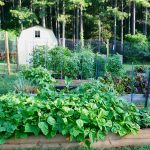Growing Potatoes in the Home Garden

by Jeanne

[…] planted potato slips or pieces of potato in late March in a 10 x 10 raised bed filled with soil and compost. The […]

Are you looking for Christmas gifts for gardeners? This is your holiday gift guide to find the perfect present for that special gardener in your life! I have a lot of experience shopping for Christmas gifts for gardeners, that’s for sure. My dad was an avid gardener, and I delighted in buying him gifts from…

Have you ever wanted to start a vegetable garden, but felt completely lost about what to grow? Here at Home Garden Joy, I specialize in making gardening fun and easy for beginners. Sometimes, the gardening information available is scary. It reads like a cross between chemistry class and a foreign language. Well, I’m here to…

When you improve garden soil, you improve the health of your plants. And, you improve the nutrient quality and quantity of fruits, vegetables, and herbs. There’s an old saying in gardening: The better the soil, the healthier the plants. And the healthier the vegetables, fruits, and herbs you grow in your home garden, the healthier…

Whether you’re new to backyard gardening or just bought your first home and have always longed for the day when you can plant an organic vegetable garden, these tips for starting a backyard garden offer newcomers to the world of gardening useful information to help you be successful. Vegetable gardening doesn’t need to be expensive,…

The best potatoes I ever tasted were on the island of Malta in the Mediterranean sea. There the soil is very thin and the whole island is very dry.
I also find potatoes in Europe a lot tastier than on this side of the pond.